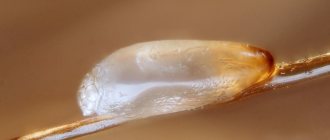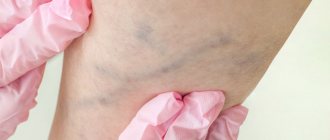From this article you will learn:
- What is diffuse alopecia
- What are the symptoms of diffuse alopecia in women?
- What are the causes of diffuse alopecia in women?
- What treatments are there for diffuse alopecia?
Both men and women suffer from diffuse alopecia. This trichological disease is characterized by uniform hair loss. This disease is the most acute problem for women, since hair is one of the main criteria for their attractiveness. Men, for the most part, believe that baldness is a normal process and do not seek the help of doctors. Diffuse alopecia in women occurs at a very fast pace, so it is better to start treatment at the first sign. Of course, this disease does not lead to baldness, but a person can lose from 20 to 50% of his hair.
What causes diffuse alopecia in women?
Every day, a completely healthy person should lose no more than 150 hairs. Diffuse alopecia provokes a significant loss of hair – more than 1000 per day. Any woman faced with this problem will feel fear and anxiety! It has been established that the harmful effects of many factors of the external and internal environment can become sources of this disease:
- Unstable mental state. A woman exposed to chronic stress is automatically at risk. With frequent psycho-emotional shocks, excessive amounts of adrenal hormones are released, which negatively affects the blood supply to the scalp.
- Hormonal imbalances. Disturbances in the functioning of the ovaries, thyroid gland, and pituitary gland are the most common reason for the development of this disease.
- Medicines. The causes of the disease include antiviral drugs, hormonal contraceptives, antipsychotics, and psychotropic drugs.
- A woman who has undergone a serious injury or surgery is also susceptible to this disease. Diffuse alopecia in women occurs against a background of general stress and weakening of the body.
- Inflammatory phenomena in the body, various infections.
- Diffuse alopecia appears due to a lack of various vitamins and other nutrients , poor nutrition in general. A woman who refuses to monitor the quality of her diet risks developing symptoms of this disease.
- Chronic or acute poisoning of the body with dangerous chemicals.
- Ionizing radiation harmful to health.
Diffuse alopecia is a “bell” indicating that a serious malfunction has occurred in the body’s functioning .
Having discovered symptoms, you must immediately undergo a full examination of the body and identify the cause of the disease, and having established it, you must begin treatment as soon as possible.
Treatment options
Pharmacological
Pharmacological options can be divided into drugs with androgen-independent and androgen-dependent mechanisms of action.
Androgen-independent medications
Minoxidil Currently the only androgen-independent medication in widespread use is minoxidil topical solution. This medication's proposed mechanism of action is by affecting hair cycling, causing premature termination of telogen, and probably prolonging anagen. Understanding exactly how minoxidil exerts these effects is currently the subject of intense research. Although this is available in both 2% and 5% preparations, only the 2% solution is currently FDA-approved for FPHL (DeVillez et al 1994). A study comparing the efficacy of the two concentrations using target area hair counts at 48 weeks as a primary endpoint showed a mild nonsignificant advantage for the 5% solution (Olsen et al 2002).
Androgen-dependent medications
The use of all androgen-dependent medications to treat FPHL carries a risk of causing abnormalities in the genitalia of the male fetus. , these medications are contraindicated in women who are pregnant, which leads many physicians to recommend that women start and thus remain on an oral contraceptive pill throughout their course of treatment with these medications. As with minoxidil, all androgen-dependent medications need to be continued for at least 1 year before an accurate appraisal of efficacy can be made.
Finasteride Finasteride works by inhibiting 5α-reductase II enzyme, which is responsible for catalyzing the conversion of testosterone to the much more active chemical 5 DHT. Thus, finasteride suppresses overall androgen activity by restricting total circulating androgen activity.
Cyproterone acetate This medication inhibits gonadotropin-releasing hormone (GnRH) and blocks androgen receptors. Other uses include prostate cancer, hirsutism, and severe acne. Is commonly used combined with estradiol as an oral contraceptive pill named Diane-35.
Spironolactone Spironolactone is used widely to treat FPHL and hirsutism. It acts as an androgen antagonist by competitively blocking androgen receptors, as well as inhibiting ovarian androgen production. In the USA it is the most widely used antiandrogen to treat FPHL.
The side effect profile of spironolactone is perhaps more varied compared with other medications, due partly to its additional actions as an aldosterone antagonist. These include postural hypotension, electrolyte disturbances, menstrual irregularities, fatigue, urticaria, breast tenderness, and hematological disturbances.
Flutamide Flutamide is a potent antiandrogen, acting via androgen receptor antagonism. As such, it is commonly used to treat advanced prostate cancer and hirsutism. Being one of the newer antiandrogens, there is limited medical literature on its use in FPHL. Adverse effects due to flutamide are potentially severe. These include hepatic dysfunction and breast tenderness, both of which are dose-related.
How does diffuse alopecia manifest in women?
This disease does not cause the death of hair follicles: they simply stop performing their natural functions.
Signs of diffuse alopecia in women:
- Excessive hair loss (if you lightly pull a strand, up to 10 hairs will fall out).
- The condition of the hair worsens: it has an unhealthy appearance, brittle, weakened (you don’t need to put in a lot of effort to pull out a few hairs).
- Hair falls out not only on the head, but also on other parts of the body.
The natural daily rate of hair loss is up to 100 pieces (when combing or while washing your hair). Diffuse alopecia causes very heavy hair loss - up to 1000 hairs per day.
There is telogen effluvium and anagen diffuse alopecia. The telogen type is characterized by premature cessation of the functioning of hair follicles. Anagen effluvium is characterized by hair loss during the period of hair growth.
Hair transplant using HFE technology – hair restoration without surgery
Hair loss, causes and treatment deserve serious attention as the problem of baldness is common to many people. If this bothers you and you contact the doctors: “severe hair loss, help,” we can recommend the most effective method for restoring hair density.
HFE technology is non-surgical. After the transplantation there are no scars left. For transplantation, natural follicular units are taken, including 1-2-3-4 hairs.
This is one of the most effective remedies against hair loss in men. After the procedure, almost one hundred percent engraftment of the transplant material is observed. And the transplanted hair will grow and never fall out.
The transplant procedure is performed using a microscope under anesthesia. It lasts for several hours. The latest micro-instruments are used for transplantation - the choi implanter and micropunch. The whole process is divided into two stages:
- extraction or receipt of transplant material from the donor area;
- implantation - transplantation of follicles into the area of baldness.
Classification of diffuse alopecia in women
This disease manifests itself in two different forms: telogen and anagen, each with characteristic onset and causes. Telogen effluvium occurs slowly. Its source may be the development of some pathology in the body. This type of diffuse alopecia is promoted by hormonal imbalance, general stress or vitamin deficiency. Hair follicles stop functioning, stopping the growth of new hair.
The anagen form of alopecia is characterized by sudden heavy hair loss and manifests itself after exposure to sudden and strong irritants on the body: radiation exposure, taking certain medications and toxic substances. Anagen diffuse alopecia develops in cancer patients after a course of chemotherapy and radiation . The pathogenesis of this type of diffuse alopecia is that the hair follicles are damaged and hair falls out during their active growth.
Read material on the topic: Caring for dry hair
Collection of donor material
The procedure for a non-surgical transplant against hair loss in men begins with obtaining the transplant material. To obtain follicles, a punch needle with a thickness of 0.5-0.9 mm is used. Donor material is taken from the occipital area under anesthesia. The selection of tools is carried out taking into account the thickness of the hair, the density of the skin and other physiological characteristics.
The resulting follicles are immersed in a saline solution at a temperature of 4 degrees. After this, sorting is carried out under a microscope into:
- transplants containing one bulb;
- transplants including two bulbs;
- three-bulb grafts.
After sorting, the donor material is treated with a special solution, which enhances the survival rate of the follicles and activates hair growth after transplantation.
Diagnosis of diffuse alopecia in women
Diffuse alopecia is a disease that is treated by trichologists. After the examination, a woman often needs consultations with an endocrinologist, psychologist, or gastroenterologist. The most common patient of a trichologist is a woman. Because of this, it seems that this disease is not detected as often in men. However, representatives of the stronger sex should also not neglect the symptoms of alopecia and visit a doctor on time.
For quality treatment, it is necessary to find out what is the cause of hair loss. It is necessary to undergo a general examination of the body. It is as follows:
- Blood test: clinical and biochemical. With its help, you can learn about the condition of various organs and systems, detect anemia and problems with the immune system, find out about the presence of inflammation and allergies. Kidney and liver tests are done to check the functioning of the kidneys and liver.
- Checking hormonal status. A woman and a man are tested for the level of sex hormones, adrenal cortex and thyroid hormones.
- Blood test for sugar levels. Hair may begin to fall out in type 1 and type 2 diabetes due to pathological changes in the walls of blood vessels and nerve endings.
- Allergy tests. They are done in order to exclude the presence of atopic dermatitis and other allergic diseases.
- Ultrasound examination of the thyroid gland , abdominal cavity, pelvic organs. These studies are necessary in order to assess the general condition of the body and identify foci of chronic inflammatory processes.
- Tests for helminthiasis. With confirmed helminthic infestation, a disturbance in the condition of the hairline occurs, as metabolism is disrupted and an allergic reaction is detected.
- Immunogram. This study is required if there is a suspicion of immunodeficiency. Without its results, the doctor cannot prescribe immunomodulating or immunostimulating drugs.
- Consultation with a psychologist/psychiatrist. Necessary for identifying and eliminating problems in the psycho-emotional sphere.
The anagen form of the disease is easier to diagnose, since it is easy to trace the connection between the harmful effects of drugs, poisons, radiation and hair loss.
Recommended articles on the topic:
- Hair carving: photos, types, advantages and disadvantages
- Plasma therapy for the scalp
- Useful vitamins for hair: against hair loss and for growth
Cosmetic aids
Since so much of the morbidity of FPHL lies in body image disturbances, cosmetic aids are an integral part of management options. These incorporate hair styling techniques, camouflage products, hair replacements, hair accessories, and additions.
FPHL is an under-recognized entity. Significant hair loss is seen in over ¼ of females over the age of 50. Satisfactory management of this condition requires a knowledge of possible underlying causes, physical comorbidities, possible differential diagnoses, and the various therapeutic modalities available. It also requires an appreciation of the potential psychological effect of hair loss on affected individuals, and sensitivity during patient consultations.
The condition is progressive without treatment. Current pharmacological treatment stems further progression and can also stimulate partial regrowth.
Regardless of which medication is utilized, the response is slow, and requires patience and persistence in both patient and clinician. The cosmetic effects of this condition should not be underestimated, thus cosmetic aids and surgical options are both important adjunctive options that need to be discussed with these patients in addition to pharmacotherapy.
Treatment of diffuse alopecia in women
To cure diffuse alopecia in women, an integrated approach is required, which includes taking medications, rubbing various medicinal drugs into the scalp, physiotherapy, and nutritional correction.
In any case, the cause of massive hair loss is first determined, then we begin to eliminate it.
It is imperative to undergo a medical examination to rule out:
- Diseases of the liver and thyroid gland.
- Diseases of the adrenal glands and ovaries.
- Problems with the central nervous system.
If diffuse alopecia is detected, the trichologist prescribes phototrichoscopy and tests for the content of trace elements and the level of dihydrotestosterone.
Diffuse alopecia in women can be completely eliminated with timely diagnosis. However, treatment is a long process that requires a lot of effort and patience. To awaken the hair follicles and increase blood flow to them, external agents are used. If it is known for sure that the cause of alopecia is taking certain medications, then have no doubt - after eliminating them, the hair will begin to grow again.
If treatment is started on time, it is possible to stop hair loss within 2–3 months, and restore hair growth within 8–9 months. To prevent a recurrence of the disease, it is better for a woman to forget about hair coloring, perm and blow-drying.
Treatment of alopecia with medications
Excessive hair loss most often becomes the basis of a depressive state in men and women, which in turn further complicates the course of this disease. Therefore, to speed up the treatment of alopecia, it is necessary to “put in order” the emotional background. For severe psychological disorders, medications such as novopassit, tincture of motherwort or valerian will help. In mild cases, tea infused with mint will help. In difficult situations, you need to contact a psychologist or psychiatrist.
To strengthen hair, it is recommended to consume a certain vitamin complex. For baldness, the doctor prescribes oral vitamins A, C, PP and injections of vitamins B1, B6, B12.
To stop excessive hair loss, a specialist may prescribe the following medications:
- minoxidil;
- Cromaclean;
- finasteride.
Minoxidil stimulates the follicles and promotes hair growth. It is used in the treatment of androgenetic alopecia, but it has also shown its effectiveness in diffuse baldness. The medicine is taken every day for a long time. With timely treatment, the effect is visible within 2-3 months, otherwise you will have to treat it for a year.
Cromaclyn also has a similar effect. It is often found in masks, shampoos and balms.
Finasteride is taken only orally and only after a doctor's prescription. This is a male hormonal drug. The effects of finasteride can be felt within 3-6 months after starting to take it.
Hair masks
Hair masks can also have a stimulating effect on the follicles. They are easy to buy at the store or make yourself.
Use the following products to prepare effective masks:
- mustard powder;
- onion;
- garlic;
- red pepper.
To prepare a mask, take one of these components, add vitamins, oils, honey and other beneficial ingredients, mix them and apply to the scalp. Put on a polyethylene cap and wrap a towel around your head.
In addition to masks, you can strengthen your hair and stimulate its growth using balms, gels, lotions with extracts of substances that increase blood flow to the hair follicles.
Drugs intended for the treatment of diffuse alopecia in women will help not only restore hair, but also strengthen it. Nourishing products will make them stronger and healthier.
Read material on the topic: Useful vitamins for hair: against hair loss and for growth
Hair transplantation
In the second stage of the procedure, donor follicles are implanted into bald areas. For replanting, a special micro-instrument choi implanter is used with a needle thickness of 0.5-0.9 mm, selected so that the diameter of the instrument matches the size of the transplanted material.
Before implantation, the length of the follicle is measured using a microscope. Based on the data, the length of the implanter needle is adjusted, after which the follicles are implanted into the skin. Thanks to a special tool during transplantation, you can control the direction and angle of hair growth. These parameters are individual for patients and must be observed during transplantation. Where there is hair on the skin, grafts are placed parallel to their growth; if there is no hair, the natural direction is restored.
In addition, it is important to ensure that the hair has a natural thickness. Therefore, when transplanting, grafts with different numbers of hair follicles are used. For example, one bulb is implanted along the edge of hair growth. Next, material with two or three follicles is implanted.
After transplantation, the transplantation area is treated with a special solution, which activates engraftment and hair growth.
Treatment of diffuse alopecia in a beauty salon
If you find yourself with symptoms of diffuse alopecia and don’t know what to do, contact the professionals at the Veronika Herba beauty salon. Experienced trichologists work here who will conduct a high-quality examination of the scalp and select individual effective treatment.
For many people, men and women of different ages and social status, hair loss is a real problem. We will help you solve it. You will feel cheerful again, always look fresh, bright, irresistible.
You don't have to spend a lot of time performing complex and unpleasant procedures at home. It is much easier to seek help from real professionals - the Veronika Herba beauty and health center, equipped with effective and modern equipment. There are two such centers in Moscow – near Timiryazevskaya metro station and Otradnoye metro station.
Causes of the disease
There are quite a few reasons, they are determined depending on the type of alopecia.
These may be external factors, the consequences of diseases, deficiencies, as well as heredity. Unfortunately, there are also incompletely studied causes of the disease, but even they are treatable.
Main causes of the disease:
heredity
· deficiency of vitamins, minerals
· postpartum period, lactation period, menopause period
· previous diseases (endocrine, autoimmune, skin)
· intoxication (antibiotics and other medications, chemicals, poisons)
· stress and shock conditions
· antitumor therapies
· injuries (various types of burns, frostbite, wounds)
Course of the disease
This type of alopecia is a disease in which the loss of hair spreads from the center of the head (parting) to the sides. The severity is assessed according to the table. Trichologists call it the “Ludwig scale”. Genetics has a great influence on the form of the disease. There is an opinion that protein formation occurs through stimulation of the immune system. The impetus for this is the activation of certain genes, as a result of which the hair follicle suffers and loss of the shaft occurs. Factors contributing to “gene activation” are problems of various etiologies - stress, vaccinations, taking antibiotics, other drugs, etc.








